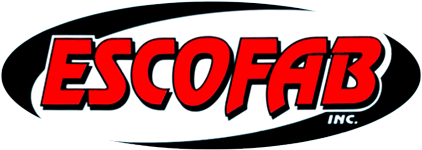According to research, the metal fabrication industry is worth $138.07 billion. This figure is expected to rise in the next few years as the demand for fabricated metal products increases. So, what is the process behind metal fabrication? This article will take a closer look at the process of metal fabrication and how it works.
What Is Metal Fabrication Used For?
Metal fabrication is the process of creating metal products by cutting, shaping, and assembling them. This process can be used to create a variety of metal products, including car parts, kitchen appliances, and even buildings. Furthermore, metal fabrication can be used to create both small and large products.
What Is the Process Behind Metal Fabrication?
Metal fabrication is the process of creating metal structures by cutting, bending, and assembling metals. It involves a variety of processes, including welding, cutting, forming, and machining. Here is a step-by-step guide to the metal fabrication process.
1. The Designing Process
The first step in metal fabrication is the designing process. This is where engineers and designers come up with plans and drawings for the metal products. They use computer-aided design (CAD) software to create these plans and drawings.
Once the plans are completed, they are sent to the fabricators. The fabricators will then use these plans to create the metal products. Designing is a crucial step in metal fabrication as it will determine the final product’s size, shape, and strength.
2. The Cutting Process
After the design is finalized, it’s time to cut the metal. This is generally done with a shearing machine, which uses large blades to cut the metal into smaller pieces. For more precise cuts, a water jet cutter or laser cutter may be used. These methods are often used for cutting aluminum or stainless steel.
The next step is to cut the metal into the desired shape. This is done with a variety of machines, including saws, lathes, and milling machines. The type of machine used depends on the size and shape of the metal being cut.
3. Forming
Forming is the process of shaping the metal into its desired shape using machines, including presses, rollers, and stamping machines. The type of machine used depends on the size and shape of the metal being formed. Forming includes various processes and could be one of them, which include folding, bending, machining, punching holes, or stamping to come up with the desired shape.
4. Assembling
Assembling is the process of joining the pieces of metal together. This is done with a variety of machines, including welding machines, riveting machines, and bolting machines. The machine used depends on the size and shape of the metal being assembled. Assembling includes various processes and could be one of them, which include welding, riveting, or bolting the pieces together.
5. Finishing
Finishing is the process of adding a protective coating to the metal using painting machines, powder coating machines, and plating machines. The type of machine used depends on the type of finish being applied to the metal. Finishing includes various processes and could be one of them, which include painting, powder coating, or plating the metal.
6. Testing
Testing is the process of verifying that the metal meets all the requirements for its intended use. This is done with a variety of machines, including tension testers, hardness testers, and fatigue testers. The machine used depends on the type of test being performed on the metal. Testing includes various processes and could be one of them, which include testing the metal for tension, hardness, or fatigue.
Conclusion
The process of metal fabrication is quite fascinating when you think about it. It’s amazing to see how something as strong as metal can be formed and manipulated into all sorts of shapes and sizes. If you need professional metal fabrication services, be sure to contact Escofab Inc. We specialize in custom metal fabrication and would be happy to help you with your project.
